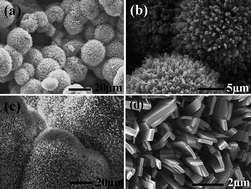An environmentally friendly one-step method to synthesize palladium (Pd) nanobelts, nanoplates and nanotrees using vitamin B1 without using any special capping agents at room temperature is described. This greener method, which uses water as a benign solvent and vitamin B1 as a reducing agent, can be extended to prepare other noble nanomaterials such as gold (Au) and platinum (Pt). Depending upon the Pd concentration used for the preparation, Pd crystallized in different shapes and sizes. A lower Pd concentration yielded a plate-like structure where thickness of these plates varied from 100 nm to 250 nm with a length of several microns. An increase in concentration of Pd resulted in the formation of tree-like structures. The Pd plates are grown on a single Pd nanorod backbone mimicking the leaf-like structures. Upon further increase in Pd concentration, Pd nanoplates started becoming thicker by vertically aligning themselves together to form ball-like structures. The synthesized self-assembled Pd nanoparticles were characterized using, scanning electron microscopy (SEM), transmission electron microscopy (TEM), X-ray diffraction (XRD) and UV spectroscopy. The Pd nanoparticles showed excellent catalytic activity for several C–C bond forming reactions such as Suzuki, Heck and Sonogashira reactions under microwave (MW) irradiation conditions.

You have access to this article
 Please wait while we load your content...
Something went wrong. Try again?
Please wait while we load your content...
Something went wrong. Try again?


 Please wait while we load your content...
Please wait while we load your content...